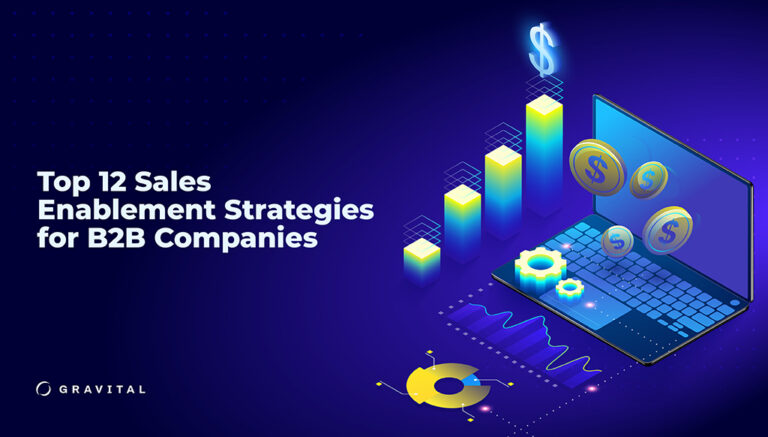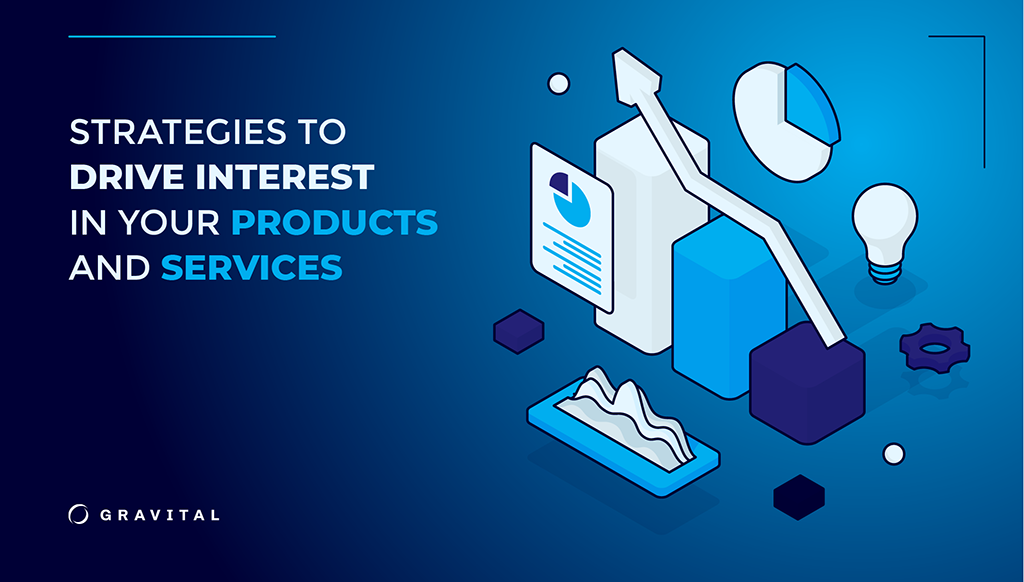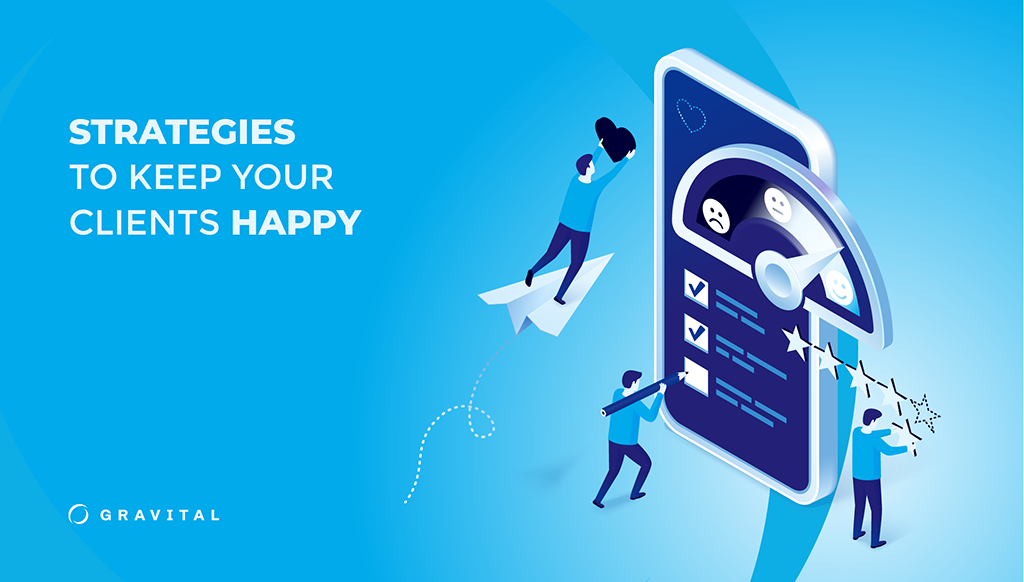Business-to-business (B2B) companies are eternally searching for better ways to increase sales and grow. One way that has proven to be successful is sales enablement. This approach to sales employs a variety of tools that empower sales teams to better maneuver their connections with prospective customers and close more deals.
In this article, we’ll go over some sales enablement basics and list the top 12 sales enablement strategies for B2B companies.
Sales Enablement 101
Sales enablement is the practice of providing sales teams with the knowledge, skills and resources they need to navigate the sales process more effectively and close more deals. Sales enablement strategies include training, playbooks and technology, among others.
Where did it come from?
In the late 1990s, sales consulting firms began to uncover a sales execution problem: corporate red tape and roadblocks frequently prevented sales reps from focusing on what they were hired to do: sell.
To address this sales execution problem, in 1999 two men, John Aiello and Drew Larsen, created the SAVO Sales Enablement Platform to help companies improve the efficiency and effectiveness of their salespeople.
Here are some of the functions of the sales enablement platform:
- Centralize all sales assets so they’re current and easy-to-find
- Target and align sales assets with different selling situations
- Push the best assets based on best practices and business rules
- Leverage customer relationship management (CRM) data to generate client-specific assets
- Customize the message while reinforcing the brand
- Drive adoption and content quality through embedded analytics
The platform united the entire sales ecosystem–sales, marketing, production, customer service–to improve client engagements with the best sales assets for every specific selling situation.


Sales enablement offers numerous benefits and advantages to B2B companies that use it, including these:
- Improve sales performance: sales reps close more deals, thus increasing revenue increase.
- Boost sales efficiency: sales teams spend less time on administrative tasks and more time on selling.
- Enhance customer relationships: sales teams have a better understanding of customers’ needs and how to serve these needs.
Significant Stats
During the past 20+ years, sales enablement has evolved into a key area of running a successful business. In the last five years alone, the use of sales enablement has increased 343%, resulting in a 49% win rate on forecasted deals. Many companies are seeing a significant impact on sales as a result of sales enablement, with 76% reporting sales increases between 6% to 20%.
Following are other significant sales enablement statistics:
- 84% of sales reps achieve their quotas when their employers incorporate a best-in-class sales enablement strategy.
- 73% of sales leaders say sales enablement is a top priority for their organization.
- 77% of sales reps say that sales enablement has helped them to increase their average deal size.
- 64% of sales reps say that sales enablement has helped them to shorten their sales cycle.
- 59% of sales reps say that sales enablement has helped them to improve their customer satisfaction rates.
- Salespeople who receive regular training are 23% more likely to exceed their sales goals.
Sources: G2, Salesforce, Mediafly, Highspot, HubSpot, Gitnux.


1. Sales Enablement Plan
The first step in any sales enablement strategy is to create a plan that should outline your goals, specific objectives and execution plan. It should also include a timeline and identify the resources you will need.
2. Sales Training and Coaching
Sales training and coaching programs ensure that new hires and existing sales teams have the information, skills and sales tools they need to be successful. Sales training can be provided in a variety of formats, including classroom training, e-learning and on-the-job training. Regular training and coaching sessions help sales teams remain informed about the latest industry trends, product updates and sales strategies.
3. Sales Playbooks and Templates
Sales playbooks and templates outline the sales process and provide a framework for handling different sales scenarios. They show sales reps how to qualify leads, tackle sales objections, build relationships with different types of customers and close deals.
4. Sales Enablement Technology
The sales enablement approach typically involves the use of technology such as CRM software, sales tracking and reporting systems, data analytics and sales automation tools. Technology allows companies to streamline the sales process, making it more efficient and effective, and monitor performance, giving them the data they need to optimize their B2B sales strategies.
5. Sales Content
High-quality content that is tailored to the needs of potential buyers–such as product brochures, case studies, white papers and testimonials–helps sales teams demonstrate the value of products and services and, therefore, sell them more successfully.
6. Lead Management
Lead scoring and prioritization tools enable teams to focus their efforts on the most promising leads and opportunities. Lead management systems ensure that leads are tracked and managed effectively.
ALSO READ: How to Use B2B Content Marketing to Boost Your Sales
7. Sales Team Feedback
Sales reps have valuable insights into what works and what doesn’t. Make sure to gather their insights as part of your sales enablement efforts.
8. Collaboration
Collaboration between sales, marketing and customer service is critical to make sure that every team is implementing the right strategies and working toward the same goals. The proper alignment of these departments’ efforts facilitates a seamless buying experience for buyers.
9. Performance Monitoring
Sales performance can be tracked and measured using a variety of metrics, such as lead conversion rate, sales cycle length and average deal size. By closely monitoring and analyzing sales performance, B2B companies can identify areas where sales reps need additional training or support.
10. Continuous Improvement
Continuous improvement is the ongoing betterment of products, services or processes through incremental and breakthrough improvements. In sales enablement, continuous improvement ensures that strategies are continually evolving and adapting to changing business needs.
11. Up-to-Date Strategies
Your sales enablement strategy should be a living document that is routinely updated with the latest trends and best practices.
12. Patience
Sales enablement is a long-term investment. Be patient and persistent, and you’ll eventually achieve the outcomes you want.
Sales enablement works. B2B companies in a wide range of industries are reporting positive results stemming from their sales enablement strategies. At Gravital, we can help you create, implement and measure a successful sales enablement strategy that will boost sales and make it possible for you to achieve your sales and business goals. To learn more about Gravital’s sales enablement services, talk to us.


